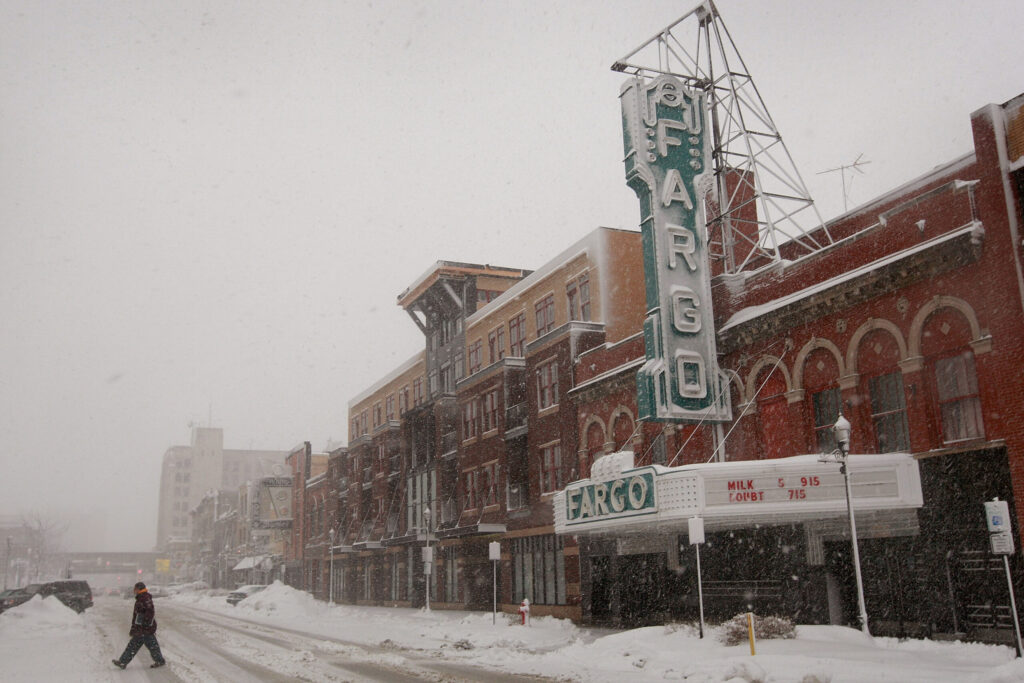
Christopher Ingraham/Minnesota Reformer
More ticks. More mosquitos. Less snowmobiling and ice fishing.
Those are just a few of the climate impacts facing Midwestern states in the coming decades, according to the just-released Fifth National Climate Assessment.
The massive, congressionally-mandated report is released roughly every five years in an attempt to track how climate change is affecting the United States, and what policymakers can do to address the issue.
In addition to national trends, the report also summarizes findings for each U.S. census region. Here are the assessment’s five main takeaways for the Midwest.
Major disruptions to agriculture are coming
The Midwest produces roughly one third of the world’s corn and soybeans, and increasingly erratic weather patterns are going to make that more difficult. The growing season is getting longer, summers are getting hotter, and precipitation is becoming more volatile, with rapid cycling between extreme wet and dry conditions.
Milder winters are allowing various agricultural pests (stink bugs, corn earworms, etc.) to make their way northward, putting further pressure on growers.
But the report credits farmers and policymakers for taking proactive steps to address these problems. Practices like cover crops, no-till farming, and more precise application of fertilizers can help smooth out some climate-driven volatility, making boom and bust cycles less severe. But farmers may have to settle for reduced yields, and reduced profits, as a trade-off.
Ecosystems are degrading
The natural environment is also responding to the changing climate, often for the worse. On land, some cold-adapted species like moose and the monarch butterfly are fighting for survival as warm weather invaders move in. Wildfires are becoming more common, fouling the air and altering the landscape.
Flooding and droughts, meanwhile, are stressing aquatic ecosystems. Popular species like walleye and trout are, in some cases, becoming more scarce as a result. Winter ice cover is diminishing, reducing opportunities for ice fishing and other recreational pursuits. As temperatures rise and ice weakens, winter drownings are becoming more common.
Greater risks to public health
A warming climate is expected to worsen air quality in the Midwest. Higher temperatures mean more production of ground-level ozone, which causes various respiratory problems. A hotter climate also means more wildfires and more smoke pollution. Extreme heat events will lead to death and hospitalization.
But there will be smaller effects too. Warmer spring and fall temperatures mean more pollen and more intense allergy seasons. Oak pollen alone could drive a 7% increase in asthma-related ER visits by 2050, according to the report. Heavier precipitation events will lead to major floods like the Red River flood of 1997, as well as smaller more localized events that cost time and energy to manage.
Warmer winters mean more ticks and all the illnesses they harbor. Already, Lyme disease incidence across the Midwest has increased roughly fivefold since 2000. Mosquito-borne illnesses like West Nile virus, Zika and others may become more common.
More infrastructure headaches
Changes in temperature and precipitation will place more stress on roads, bridges, dams, power grids and other pieces of vital infrastructure. Increased or decreased river flow on the Mississippi, for instance, will lessen the number of transport ships able to travel on it. “Without coordinated adjustments to monitoring, water releases, and communications along the river, significant disruptions to traffic flow and volume of goods transported are expected,” the report warns.
High temperatures reduce power line carrying capacity at the same time demand for air conditioning increases, raising the odds of grid failures.
Messier hydrology
Total annual precipitation is expected to keep rising across the Midwest, according to the report. But it will come concentrated in major flooding events interspersed with periods of drought. More will fall as rain and less as snow, with predictable consequences for ski resorts, snowmobile manufacturers, and other parts of the winter recreation industry.
The average summer surface water temperature on Lake Superior has already increased by about 5 degrees Fahrenheit since 1980, according to the report. The implications for the overall ecology of the lake are unknown.
